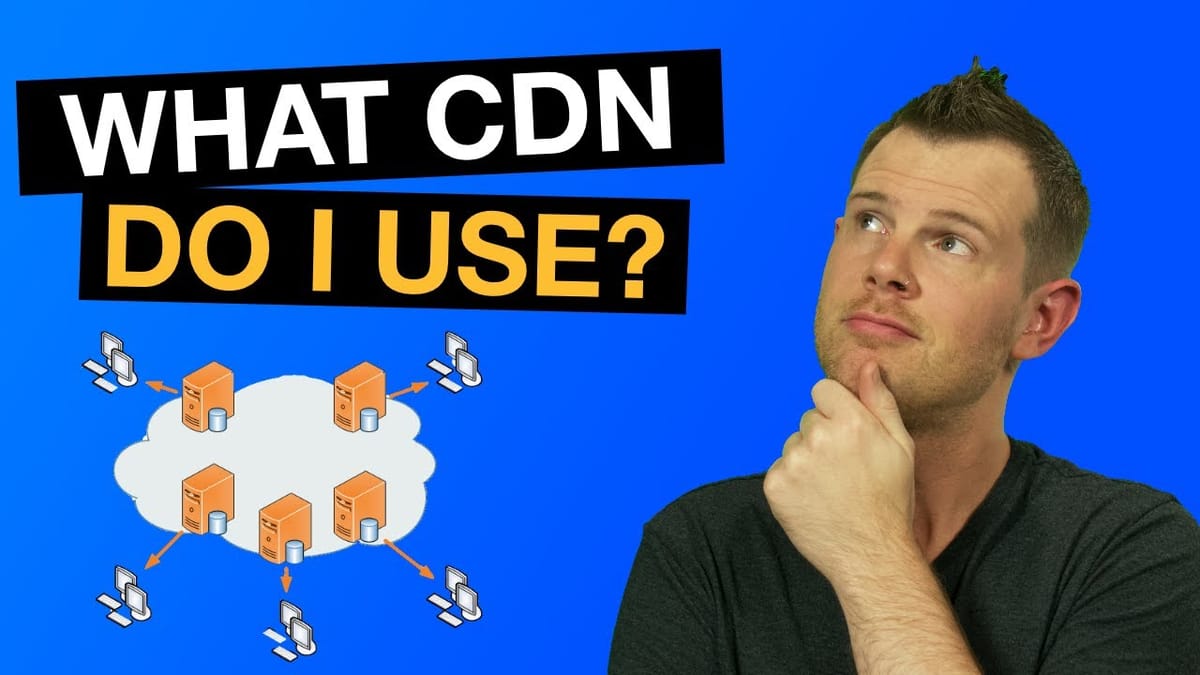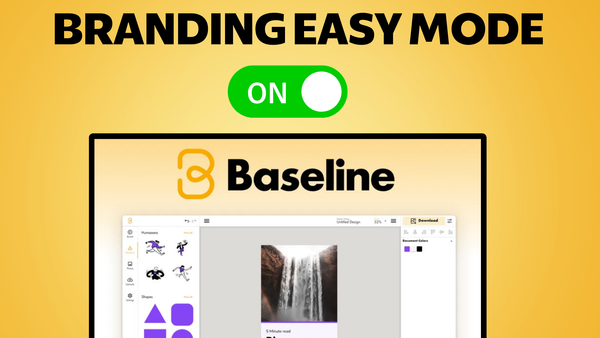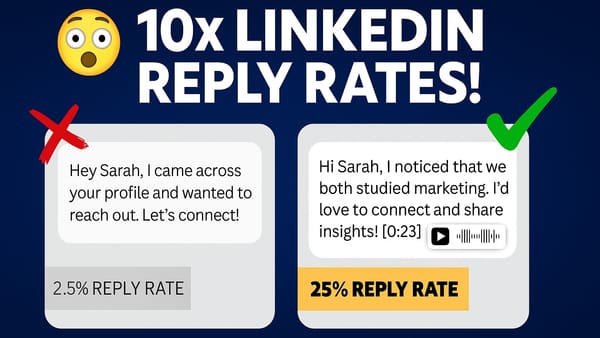What CDN Do I Use? Why Did I Switch Away From BunnyCDN?
Discover why switching CDNs from BunnyCDN to Gumlet matters, and learn how to set up a reliable content delivery network for your website.

Introduction
In today’s digital landscape, website performance is crucial for user experience and search engine rankings. Content Delivery Networks (CDNs) play a vital role in optimizing website speed and reliability. This article delves into the world of CDNs, exploring why the author switched from BunnyCDN to Gumlet, and provides a detailed guide on setting up Gumlet for optimal performance.
We’ll cover the basics of CDNs, the reasons behind the switch, and a step-by-step process for implementing Gumlet as a comprehensive CDN solution. Whether you’re a website owner, developer, or digital marketer, this in-depth guide will help you understand the importance of CDNs and how to leverage them effectively for your online presence.
Get Gumlet Get Bunny CDNWhat is a CDN? [00:32]
A Content Delivery Network (CDN) is a crucial component of modern web infrastructure that significantly enhances website performance and user experience. Let’s explore the key aspects of CDNs and why they’re essential for websites with a global audience.
Definition and Purpose
- CDNs are distributed networks of servers strategically located around the world
- They store and deliver website files, primarily images, JavaScript, and CSS
- The main goal is to reduce latency and improve load times for users worldwide
Points of Presence (POPs)
- CDNs utilize multiple servers called Points of Presence (POPs)
- These POPs are distributed globally to ensure content is closer to end-users
- The more POPs a CDN has, the stronger and more efficient it tends to be
Benefits of Using a CDN
- Improved website speed: Files are served from locations closer to users
- Enhanced security: CDNs often include built-in security features
- Automatic load balancing: Distributes traffic across multiple servers
- Reduced server load: Main server experiences less strain from file requests
How CDNs Work
- CDNs cache static content from your main server
- When a user requests content, it’s served from the nearest POP
- This process reduces the distance data needs to travel, improving speed
Global Reach and Performance
- CDNs are especially beneficial for websites with international audiences
- They help maintain consistent performance across different geographical regions
- Essential for businesses looking to expand their global online presence
Types of Content Served by CDNs
- Static assets: Images, CSS files, and JavaScript
- Dynamic content: Some CDNs can also cache and serve dynamic content
- Video and streaming: Many CDNs specialize in delivering video content
Understanding the fundamentals of CDNs is crucial for website owners and developers looking to optimize their online presence. By leveraging the power of distributed networks, CDNs play a pivotal role in delivering fast, reliable, and secure web experiences to users around the globe.
Why Did I Switch? [01:32]
The decision to switch from one CDN provider to another is often driven by specific needs and experiences. In this section, we’ll explore the reasons behind the author’s switch from BunnyCDN to Gumlet, highlighting the importance of reliability and compatibility in CDN services.
Issues with BunnyCDN
- CSS file loading problems: Encountered in 2019 while using Elementor page builder
- Files not displaying: Cached CSS files failed to load properly
- Support acknowledgment: BunnyCDN was aware of the issue
Attempted Solutions
- Alternative plugin recommendation: BunnyCDN suggested using a different plugin
- Ineffective workaround: The proposed solution didn’t resolve the issue
- Exploration of other CDNs: Began testing various CDN providers for personal and client websites
Shift in Priority: From Speed to Reliability
- Initial focus on speed: Previously prioritized the fastest CDN
- Reliability becomes crucial: Consistent performance outweighs raw speed
- Client-centric approach: Ensuring seamless experience for client websites
Impact on Website Appearance
- Broken CSS: Issues with CDN caching led to visual inconsistencies
- User experience concerns: Unreliable CDN performance affects site usability
- Balancing speed and stability: Recognizing the need for both factors
BunnyCDN’s Response
- Acknowledgment of the issue: BunnyCDN posted about the problem on their website
- Proposed fix: Added a checkbox in their plugin to address the issue
- Author’s decision: Chose not to test the fix due to satisfaction with current solution
Philosophy: “If It’s Not Broke, Don’t Fix It”
- Emphasis on simplicity: Preference for straightforward, reliable solutions
- Avoiding unnecessary changes: Sticking with a working system to minimize risks
- Focus on website stability: Prioritizing consistent performance over minor improvements
Overlap Between Gumlet and BunnyCDN
- Shared functionalities: Both services offer CDN, image optimization, and resizing
- CDN access: Providing multiple points of presence for faster file delivery
- Image compression: Reducing file sizes for quicker loading times
- Automatic resizing: Adapting images based on viewing devices
Considerations for Specific Use Cases
- Photography websites: May require higher image quality settings
- Technical or schematic images: Might need to avoid automatic resizing
- Balancing quality and performance: Adjusting settings based on specific needs
The switch from BunnyCDN to Gumlet underscores the importance of reliability and compatibility in CDN services. While speed is crucial, consistent performance and seamless integration with existing web technologies are equally vital. This experience highlights the need for website owners and developers to regularly evaluate their CDN solutions and be willing to explore alternatives when issues arise.
By prioritizing reliability and ease of use, the author found a solution that not only resolved the immediate issues but also provided a stable foundation for future website development. This approach ensures that both personal projects and client websites benefit from optimal performance and user experience.
Setting Up Gumlet [05:16]
Setting up Gumlet as your CDN provider is a straightforward process that can significantly improve your website’s performance. This section will guide you through the initial steps of configuring Gumlet for your website, focusing on the user-friendly dashboard and the quick setup process.
Accessing the Gumlet Dashboard
- Log in to your Gumlet account
- Navigate to the main dashboard
- Familiarize yourself with the clean and intuitive user interface
Adding a New Source
- Locate the “Images” section in the dashboard
- Click on “Sources” and then “Add New”
- Choose your website platform (e.g., WordPress, Shopify, Custom)
Configuring WordPress Integration
- Select WordPress as your platform
- Enter your website URL (e.g., demo.profitable.tools)
- Choose a Gumlet subdomain name (e.g., demoPT.gumlet.net)
Creating the Source
- Review your settings
- Click “Create Source” to finalize the setup
- Note: Gumlet could improve by displaying the created subdomain more prominently
Accessing Documentation
- Use the provided button to access Gumlet’s documentation
- Keep in mind that the docs may not show customized information
Preparing for WordPress Plugin Installation
- Make note of your Gumlet subdomain
- You’ll need this information to set up the WordPress plugin
Gumlet’s User Interface Advantages
- Quick setup process: Takes approximately 90 seconds
- Intuitive design: Easy to navigate and understand
- Flexibility: Supports various website platforms and configurations
Potential Improvements for Gumlet
- Subdomain display: Show the created subdomain more prominently after setup
- Clipboard integration: Automatically copy the subdomain to the clipboard
- Customized documentation: Provide personalized setup instructions
Setting up Gumlet is a user-friendly process that can be completed in just a few minutes. The platform’s intuitive dashboard and straightforward configuration options make it accessible even for those who may not have extensive technical knowledge. By following these steps, you’ll be well on your way to leveraging Gumlet’s powerful CDN and image optimization capabilities for your website.
Remember that while the setup process is quick, it’s essential to take note of important details like your Gumlet subdomain, as you’ll need this information for further configuration in WordPress. In the next section, we’ll dive into the process of installing and configuring the Gumlet plugin on your WordPress site to fully integrate the CDN functionality.
Installing the Gumlet Plugin [06:47]
After setting up your Gumlet account and creating a source, the next step is to install and configure the Gumlet plugin on your WordPress website. This process will enable you to leverage Gumlet’s image optimization and CDN features directly within your WordPress environment.
Accessing WordPress Plugin Directory
- Log in to your WordPress admin dashboard
- Navigate to “Plugins” in the left sidebar
- Click “Add New” to access the plugin directory
Searching for the Gumlet Plugin
- Use the search bar in the plugin directory
- Type “Gumlet” and press Enter
- Locate the official Gumlet plugin in the search results
Installing the Plugin
- Click the “Install Now” button next to the Gumlet plugin
- Wait for the installation process to complete
- Click “Activate” to enable the plugin on your site
Understanding Plugin Functionality
- Image optimization: Compresses and resizes images automatically
- Lazy loading: Improves page load times by loading images as needed
- CDN integration: Serves optimized images through Gumlet’s CDN
Limitations of the Gumlet Plugin
- Focus on images: Primarily handles image optimization and delivery
- CSS and JavaScript: Not directly managed by the Gumlet plugin
- Need for additional plugin: Required for full CDN functionality
Accessing Gumlet Plugin Settings
- Go to “Settings” in the WordPress admin sidebar
- Look for the “Gumlet” option in the settings menu
- Click to access the plugin’s configuration page
Importance of Proper Configuration
- Ensures optimal image delivery and optimization
- Aligns Gumlet’s services with your website’s needs
- Prevents potential conflicts with other optimization plugins
Installing the Gumlet plugin is a crucial step in integrating Gumlet’s powerful image optimization and CDN capabilities into your WordPress site. While the plugin primarily focuses on image handling, it lays the foundation for a more comprehensive CDN solution when combined with additional tools.
In the next section, we’ll dive into the specific settings of the Gumlet plugin, ensuring that it’s configured optimally for your website’s needs. This configuration will be key to unlocking the full potential of Gumlet’s services and improving your site’s overall performance.
Gumlet Settings [07:31]
Properly configuring the Gumlet plugin settings is crucial for optimal performance and integration with your WordPress site. This section will guide you through the essential settings and options available in the Gumlet plugin, helping you make informed decisions about your CDN and image optimization setup.
Accessing Gumlet Settings
- Navigate to “Settings” > “Gumlet” in your WordPress admin panel
- Familiarize yourself with the settings interface
Configuring Gumlet Source
- Locate the “Gumlet Source” field
- Paste or type in the subdomain you created during Gumlet setup (e.g., demopt.gumlet.net)
- Ensure the subdomain is entered correctly to avoid connectivity issues
Current Image Domain Setting
- Leave this field blank for most setups
- Only modify if your images are hosted on a different domain
- Default setting works for 99% of WordPress installations
Lazy Loading Options
- Enable or disable lazy loading for images
- Consider potential conflicts with other lazy loading plugins
- Gumlet’s lazy loading is incompatible with other similar plugins
Auto Compress Images
- Decide whether to enable automatic image compression
- Adjust the compression level using the provided slider
- Default setting of 80 offers a good balance of quality and performance
Fine-tuning Compression Settings
- Experiment with different compression levels if needed
- Higher values preserve more quality but result in larger file sizes
- Lower values offer smaller file sizes but may affect image quality
Considering Specific Use Cases
- Photography sites may require higher quality settings
- E-commerce sites might benefit from balanced compression
- Blog or content-heavy sites can often use more aggressive compression
Saving Your Settings
- After configuring all options, click the “Save Changes” button
- Ensure all settings are applied correctly
Testing Your Configuration
- Visit your website’s frontend to check image loading
- Use browser developer tools to verify Gumlet CDN usage
- Monitor site performance to ensure improvements
Properly configuring the Gumlet plugin settings is essential for leveraging the full potential of Gumlet’s image optimization and CDN services. By carefully considering each option and aligning them with your website’s specific needs, you can significantly enhance your site’s performance and user experience.
Remember that while these settings provide powerful optimization capabilities for images, they don’t cover CSS and JavaScript files. In the next section, we’ll explore how to extend Gumlet’s functionality to handle these additional file types, creating a more comprehensive CDN solution for your WordPress site.
How To Use Gumlet for Javascript & CSS [08:47]
While the Gumlet plugin primarily focuses on image optimization, it’s possible to extend its functionality to handle JavaScript and CSS files. This section will guide you through the process of using Gumlet as a comprehensive CDN solution for all your static assets, including JS and CSS files.
Understanding the Limitation
- Gumlet plugin: Primarily handles image optimization
- Need for additional functionality: CSS and JavaScript CDN delivery
Introducing CDN Enabler Plugin
- Search for “CDN Enabler” in the WordPress plugin directory
- Developer: KeyCDN (reputable CDN provider)
- Free plugin: No need for KeyCDN subscription
Installing CDN Enabler
- Click “Install Now” on the CDN Enabler plugin
- Activate the plugin after installation
- Navigate to Settings > CDN Enabler
Configuring CDN Enabler
- Locate the “Host Name” field in CDN Enabler settings
- Paste your Gumlet subdomain (e.g., demopt.gumlet.net)
- Ensure the subdomain matches your Gumlet settings
Specifying File Extensions
- Find the “File Extensions” section in CDN Enabler
- Add the following extensions on separate lines:
- .css
- .js
- This ensures only CSS and JavaScript files are handled
Importance of Correct Configuration
- Prevents conflicts with Gumlet’s image handling
- Ensures efficient delivery of all static assets
- Optimizes website performance across all file types
Saving and Applying Changes
- Click “Save Changes” in CDN Enabler settings
- Clear any caches (WordPress, browser, server-level)
- Test your website to ensure proper functionality
Verifying CDN Implementation
- Use browser developer tools to check file sources
- Confirm that CSS and JS files are served from Gumlet CDN
- Monitor website performance for improvements
By combining the Gumlet plugin with CDN Enabler, you create a powerful and comprehensive CDN solution for your WordPress site. This setup ensures that all your static assets – images, JavaScript, and CSS – are optimized and delivered through Gumlet’s global CDN network.
This approach allows you to leverage Gumlet’s performance benefits across all aspects of your website, potentially leading to significant improvements in load times and overall user experience. In the next section, we’ll explore how to test and verify that everything is functioning correctly with this new configuration.
Testing Functionality [10:05]
After setting up Gumlet for both image optimization and as a CDN for JavaScript and CSS files, it’s crucial to verify that everything is working as expected. This section will guide you through the process of testing the functionality of your new CDN setup, ensuring that all static assets are being served correctly through Gumlet.
Accessing Your Website
- Open your website in a web browser
- Ensure you’re viewing the live site, not a cached version
Opening Developer Tools
- Right-click anywhere on the page and select “Inspect”
- Alternatively, use keyboard shortcuts:
- Chrome/Firefox: F12 or Ctrl+Shift+I (Cmd+Option+I on Mac)
- Safari: Cmd+Option+I
Navigating to the Sources Tab
- Look for the “Sources” tab in the developer tools
- This shows the origin of all files loaded by the page
Locating Gumlet CDN Files
- Find your Gumlet subdomain (e.g., demopt.gumlet.net)
- Expand the subdomain folder to view served files
Verifying File Types
- Check for the presence of:
- wp-content folder (usually contains plugins and themes)
- wp-includes folder (core WordPress files)
Inspecting JavaScript and CSS
- Look for .js and .css files within these folders
- Hover over file names to see full Gumlet CDN URLs
Checking Image Delivery
- Locate the uploads folder under wp-content
- Verify that image files are served from Gumlet CDN
Confirming Correct Paths
- Ensure all relevant files show gumlet.net in their paths
- This indicates successful CDN integration
Performance Testing
- Use browser tools or third-party services to measure load times
- Compare performance before and after Gumlet implementation
Troubleshooting Common Issues
- Missing files: Check CDN Enabler and Gumlet plugin settings
- Mixed content warnings: Ensure all URLs are using HTTPS
Monitoring Real-User Experience
- Consider using tools like Google Analytics to track page load times
- Pay attention to user behavior metrics (e.g., bounce rate, time on site)
Testing on Different Devices and Locations
- Access your site from various devices (desktop, mobile, tablet)
- Use online tools to test your site from different geographic locations
- Ensure consistent performance across all scenarios
By thoroughly testing the functionality of your Gumlet CDN setup, you can ensure that your website is fully optimized and delivering the best possible performance to your users. This comprehensive approach to testing helps identify any potential issues early, allowing you to address them promptly and maintain a high-quality user experience.
Should You Switch? [11:35]
After exploring the process of switching from BunnyCDN to Gumlet and setting up a comprehensive CDN solution, it’s important to consider whether making a similar switch is right for your website. This section will help you weigh the pros and cons, and provide insights into the evolving landscape of CDN services.
Evaluating Your Current Setup
- Assess your current CDN’s performance and reliability
- Identify any persistent issues or limitations you’re facing
- Consider your website’s specific needs and growth projections
The “If It’s Not Broke, Don’t Fix It” Philosophy
- Recognize the value of a stable, working system
- Weigh the potential benefits against the risks of change
- Consider the time and resources required for migration
Advantages of Consolidation
- Streamlined management: Single platform for multiple services
- Simplified billing: One vendor for CDN, image optimization, and potentially video hosting
- Cohesive ecosystem: Integrated tools designed to work together
Gumlet’s Emerging Video Capabilities
- New video tab in Gumlet dashboard (currently in beta)
- Potential for comprehensive media management (images and videos)
- Similarities to BunnyCDN’s video hosting features
Considering Future Needs
- Evaluate your current and projected video hosting requirements
- Assess the importance of having all services under one provider
- Consider the potential for simplified workflows and management
Weighing the Costs
- Compare pricing structures between your current CDN and Gumlet
- Factor in potential savings from consolidated services
- Consider any hidden costs or fees associated with switching
Performance Comparisons
- Conduct thorough performance tests with your current CDN
- Set up a test environment with Gumlet to compare results
- Focus on metrics relevant to your specific use case
User Experience Considerations
- Evaluate the impact on your website’s load times and responsiveness
- Consider the potential improvements in global content delivery
- Assess the ease of use for both developers and content managers
Scalability and Growth
- Consider how each CDN solution aligns with your growth plans
- Evaluate the global presence and expansion of CDN networks
- Assess the flexibility to adapt to changing needs
Support and Documentation
- Compare the quality of customer support between providers
- Evaluate the comprehensiveness of documentation and resources
- Consider the availability of community support and forums
The decision to switch CDN providers should be based on a careful evaluation of your specific needs, current pain points, and future goals. While Gumlet offers a compelling solution with its integrated image optimization and emerging video capabilities, it’s essential to consider whether the benefits outweigh the potential disruption of changing providers.
For those experiencing issues with their current CDN or looking for a more integrated solution, Gumlet presents an attractive option. However, if your current setup is stable and meeting your needs, the decision to switch should be approached with caution and thorough testing.
Ultimately, the choice to switch CDNs is a strategic decision that should align with your overall website performance goals and business objectives. By carefully considering all factors and potentially running parallel tests, you can make an informed decision that best serves your website and its users.
Get Gumlet Get Bunny CDNKey Takeaways
As we conclude our exploration of CDN solutions and the switch from BunnyCDN to Gumlet, let’s recap the key points and insights gained from this journey:
- Understanding CDNs: Content Delivery Networks are crucial for optimizing website performance, especially for sites with a global audience. They work by distributing content across multiple servers worldwide, reducing latency and improving load times.
- Reliability Over Speed: While speed is important, the reliability and consistency of a CDN service are paramount. Issues with file loading, particularly CSS, can significantly impact website appearance and functionality.
- Gumlet as a Comprehensive Solution: Gumlet offers not only CDN services but also image optimization and automatic resizing. This integrated approach can simplify website management and potentially improve overall performance.
- Easy Setup Process: Setting up Gumlet is straightforward, with a user-friendly dashboard that guides you through the process. The quick setup time (around 90 seconds) makes it accessible for users of various technical backgrounds.
- WordPress Integration: Installing and configuring the Gumlet plugin in WordPress is a simple process. However, it primarily focuses on image optimization and requires an additional plugin (CDN Enabler) to handle JavaScript and CSS files.
- Customization and Fine-tuning: Gumlet offers various settings for image compression and lazy loading, allowing users to balance between performance and image quality based on their specific needs.
- Comprehensive CDN Setup: By combining Gumlet’s image optimization with CDN Enabler for JS and CSS, website owners can create a full-fledged CDN solution that covers all static assets.
- Testing and Verification: It’s crucial to thoroughly test the CDN setup using browser developer tools and performance testing services to ensure all files are being served correctly and efficiently.
- Emerging Video Capabilities: Gumlet’s beta video hosting features suggest a move towards becoming a more comprehensive media management solution, potentially rivaling services like BunnyCDN’s video platform.
- Decision to Switch: The choice to switch CDN providers should be based on careful consideration of current needs, future goals, and the potential benefits versus the risks of change. It’s not always necessary to switch if the current solution is working well.
- Continuous Evaluation: The CDN landscape is continually evolving, with providers adding new features and capabilities. Regular assessment of your CDN solution ensures you’re always using the best option for your needs.
- Performance Impact: Implementing a well-configured CDN can significantly improve website load times, user experience, and potentially search engine rankings, making it a crucial consideration for any serious web project.
By understanding these key points, website owners and developers can make informed decisions about their CDN strategy, whether that involves sticking with their current provider, switching to a solution like Gumlet, or exploring other options in the market.
Remember, the goal is to provide the best possible experience for your users while maintaining a manageable and efficient backend system. As web technologies continue to evolve, staying informed about CDN developments and regularly evaluating your setup will help ensure your website remains competitive and performant in the ever-changing digital landscape.
For more information on web development strategies and tools, visit ClientAmp. Join our Facebook group to engage in discussions with fellow developers and website owners. Follow us on Twitter for the latest updates and tips in the world of web performance and CDNs.




